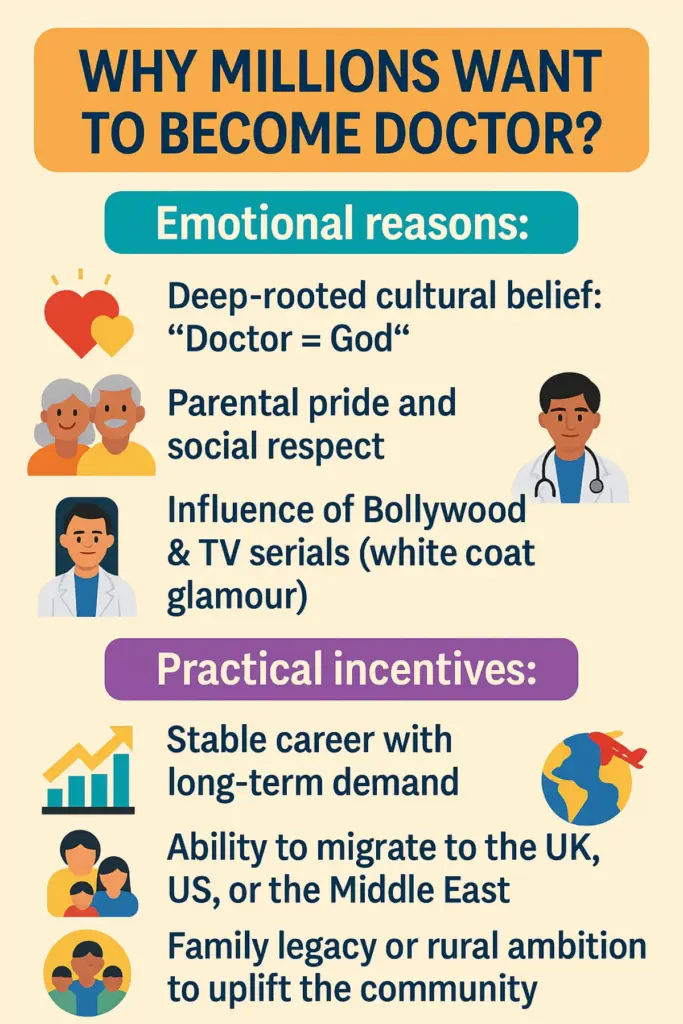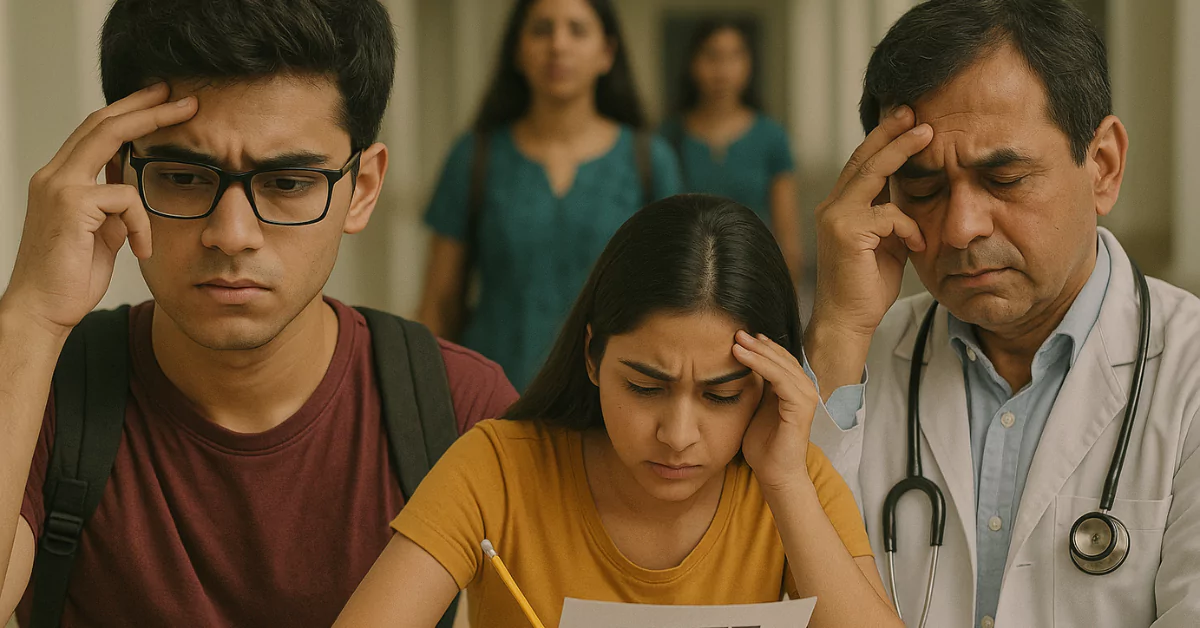NEET UG 2025: Becoming a doctor is a dream and aspiration of millions of students in India. Every year, more than 20 lakh students appear for the NEET exam, competing for a lakh of medical seats. Parents invest years of fortune saved, and students give up a decade of teenage years. Moreover, society considers the medical profession very noble. Yet, lies a complex reality marked by tough competition, rural-urban inequality, and capacity shortages.
This article follows the journey of becoming a doctor in India, the challenges of the NEET ecosystem, growing demand vs limited seats, and the socio-economic paradoxes that shape this Lucrative but demanding Career.
The Journey to Become a Doctor in India
The Indian medical journey begins at age 15–16. Students take rigorous coaching classes in and competitive environment. The aspirant’s timeline:
| NEET UG Counselling Guide 2025 | |
|---|---|
| State-wise MBBS/BDS Counselling Guide eBook 2025 | 📥 Download |
| MCC NEET UG Counselling Guide eBook 2025 | 📥 Download |
| AACCC AYUSH NEET Counselling Guide eBook 2025 | 📥 Download |
- NEET UG after Class 12 – a single-window gateway to MBBS seats in India.
- 5.5 years of MBBS (including internship) – often in highly competitive environments.
- 1–2 years gap preparation for NEET PG/INICET to secure postgraduate seats.
- 3 years of MD/MS or DNB, and often further super-specialisation (DM/MCh).
By the time one becomes a consultant, they’re in their early 30s, having given over a decade of youth to textbooks and hospitals.
NEET Exam: India’s Toughest Academic Battle
NEET UG has become one of the world’s most competitive exams:
- NEET UG 2025 applicants: 23 lakh+
- MBBS seats in India: ~1.10 lakh (Govt + Pvt + Deemed)
- Selection ratio: ~1 in 18 students
Despite government attempts to increase seats, the competition keeps increasing, pushing many to repeat years or study MBBS abroad in countries like Russia, Nepal, and Georgia.
Medical Colleges & Seats: Growing, But Not Equally
As of 2025, India has:
- 706 medical colleges
- 1,10,000+ MBBS seats
- 70,000+ PG seats
Yet, these numbers do not tell the full story.
Uneven Distribution:
- Most new colleges are coming up in the southern and western states.
- North-East, Bihar, Jharkhand, and rural UP remain underserved.
- Many private colleges have high tuition fees, limiting access for poorer families.
Rural vs Urban Divide: Doctors Where They’re Not Needed
India faces a bitter irony:
- Urban India is oversaturated with doctors, often competing for jobs in private hospitals.
- Rural India, where 65% of the population lives, faces a severe shortage of physicians.
- WHO recommends: 1 doctor per 1000 people
- India average (2024): 1.4 per 1000 (sounds good—but urban-skewed)
- In rural districts, the ratio drops to 1:7000 or worse
Many doctors avoid rural postings due to:
- Poor infrastructure and safety
- Lack of diagnostic tools
- Social isolation and limited career growth
Read Also: NEET UG 2025: Rise in Rural Toppers; New Preparation Trends & Success Stories
Demand vs Supply: Why the Crisis Still Exists
Despite the growing number of colleges and doctors, India still struggles with shortages in:
- Primary healthcare centres (PHCs)
- Government hospitals in remote areas
- Public health specialists and family physicians
Meanwhile, urban India produces more specialists than needed, many of whom either remain underemployed or go abroad.
Why Millions Want to Become Doctors?

Emotional reasons:
- Deep-rooted cultural belief: “Doctor = God”
- Parental pride and social respect
- Influence of Bollywood & TV serials (white coat glamour)
Practical incentives:
- Stable career with long-term demand
- Ability to migrate to the UK, US, or the Middle East
- Family legacy or rural ambition to uplift the community
But the reality is often far more gruelling and underpaid, especially in the early years.
Read Also: MBBS Seat Increase & its Impact in Counselling
The Future of Doctors in India
- Telemedicine and AI will ease urban doctors’ load but not replace them.
- Family physicians and public health specialists will be in demand.
- MBBS alone may not be enough—super-specialisation is rising.
- New schemes like PM-ABHIM and Aatmanirbhar Health Missions aim to strengthen rural infrastructure.
India needs doctors, but not just in hospitals, and not just in cities. It needs them in villages, research labs, policy boards, and public health missions. The dream of becoming a doctor is still noble, but it needs to be realistic, inclusive, and purpose-driven.
Because the future of doctors in India won’t be built on obsession or emotion, but on clarity, compassion, and courage.


